Blue Waters Professors
These University of Illinois faculty members from a range of fields were awarded Blue Waters Professorships, an honor that comes with substantial computing and data resources intended to boost their research efforts.
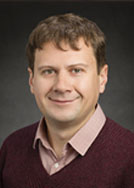 Aleksei Aksimentiev, associate professor, Physics, has done pioneering work on nanoscale biological and synthetic motors, transmembrane transport, and DNA replication that has resulted in the development of new computational strategies for modeling nano-bio systems and technological breakthroughs in DNA sequencing. He is using Blue Waters to determine the molecular mechanism of a key step in the DNA repair process.
Aleksei Aksimentiev, associate professor, Physics, has done pioneering work on nanoscale biological and synthetic motors, transmembrane transport, and DNA replication that has resulted in the development of new computational strategies for modeling nano-bio systems and technological breakthroughs in DNA sequencing. He is using Blue Waters to determine the molecular mechanism of a key step in the DNA repair process.
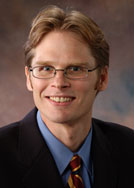 Daniel Bodony, associate professor, Aerospace Engineering, is a lead principal investigator for the DOE Center for Exascale Simulation of Plasma-Coupled Combustion, which will develop a multiphysics computational fluid dynamics code and software tools that use exascale-class computers. He uses Blue Waters to study the noise pollution caused by commercial and military aircraft in order to improve near-airport community conditions and reduce hearing damage and its healthcare costs.
Daniel Bodony, associate professor, Aerospace Engineering, is a lead principal investigator for the DOE Center for Exascale Simulation of Plasma-Coupled Combustion, which will develop a multiphysics computational fluid dynamics code and software tools that use exascale-class computers. He uses Blue Waters to study the noise pollution caused by commercial and military aircraft in order to improve near-airport community conditions and reduce hearing damage and its healthcare costs.
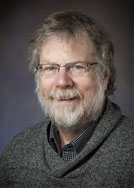 David Ceperley, Founder Professor of Physics, is one of the leading computational condensed matter theorists in the world; he is recognized for his pioneering work on developing computational methods applicable for treating many-body fermion and boson systems. His current research is related to the Materials Genome Initiative, the federally supported program to develop computational tools to design materials.
David Ceperley, Founder Professor of Physics, is one of the leading computational condensed matter theorists in the world; he is recognized for his pioneering work on developing computational methods applicable for treating many-body fermion and boson systems. His current research is related to the Materials Genome Initiative, the federally supported program to develop computational tools to design materials.
 Bryan Clark, assistant professor, Physics, focuses on the application and development of computational methods to gain greater insights into many-body and strongly correlated physics. He is the co-author of the open-source Path Integral Monte Carlo Code (PIMC++), which is widely used to study finite-temperature systems at the quantum level. He joined the University in January 2014 after post-doctoral positions at the Kavli Institute for Theoretical Physics, Microsoft Research, and the Princeton Center for Theoretical Science.
Bryan Clark, assistant professor, Physics, focuses on the application and development of computational methods to gain greater insights into many-body and strongly correlated physics. He is the co-author of the open-source Path Integral Monte Carlo Code (PIMC++), which is widely used to study finite-temperature systems at the quantum level. He joined the University in January 2014 after post-doctoral positions at the Kavli Institute for Theoretical Physics, Microsoft Research, and the Princeton Center for Theoretical Science.
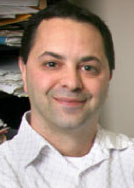 Larry Di Girolamo, professor and Daniel Shapiro Professorial Scholar in Atmospheric Sciences, has a long history of successfully using high-end computing resources for both computational modeling and processing of large satellite data sets. He uses Blue Waters and an advanced Monte Carlo radiative transfer model that he has developed and coupled to a weather prediction model to improve weather predictions and satellite retrievals of cloud properties.
Larry Di Girolamo, professor and Daniel Shapiro Professorial Scholar in Atmospheric Sciences, has a long history of successfully using high-end computing resources for both computational modeling and processing of large satellite data sets. He uses Blue Waters and an advanced Monte Carlo radiative transfer model that he has developed and coupled to a weather prediction model to improve weather predictions and satellite retrievals of cloud properties.
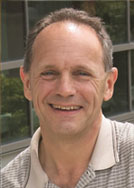 Paul Fischer, professor, Computer Science and Mechanical Science and Engineering, is well known for his research on numerical methods and software for computational fluid dynamics (CFD). His contributions have improved the accuracy and speed of complex CFD simulations. At Argonne National Laboratory he developed nek5000, a widely used CFD software package that can reliably scale to over one million processes, making it the most scalable software of its kind. He joined the University in July 2014 as a professor of Computer Science and Mechanical Science and Engineering.
Paul Fischer, professor, Computer Science and Mechanical Science and Engineering, is well known for his research on numerical methods and software for computational fluid dynamics (CFD). His contributions have improved the accuracy and speed of complex CFD simulations. At Argonne National Laboratory he developed nek5000, a widely used CFD software package that can reliably scale to over one million processes, making it the most scalable software of its kind. He joined the University in July 2014 as a professor of Computer Science and Mechanical Science and Engineering.
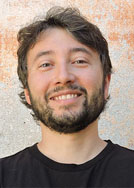 Mattia Gazzola, Assistant Professor in the Department of Mechanical Science and Engineering is focusing on the theoretical understanding and computational automatic identification of optimal artificial designs in the context of aquatic biolocomotion. His research is at the interface between fluid mechanics, biomechanics, perception, artificial intelligence and high performance computing.
Mattia Gazzola, Assistant Professor in the Department of Mechanical Science and Engineering is focusing on the theoretical understanding and computational automatic identification of optimal artificial designs in the context of aquatic biolocomotion. His research is at the interface between fluid mechanics, biomechanics, perception, artificial intelligence and high performance computing.
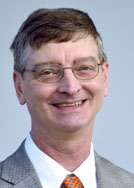 William Gropp, Thomas M. Siebel Chair in Computer Science, is known for his research in parallel computing, software for scientific computing, and numerical methods for partial differential equations. He uses Blue Waters for research on the effective use of extreme-scale systems, which may require new algorithms and programming systems.
William Gropp, Thomas M. Siebel Chair in Computer Science, is known for his research in parallel computing, software for scientific computing, and numerical methods for partial differential equations. He uses Blue Waters for research on the effective use of extreme-scale systems, which may require new algorithms and programming systems.
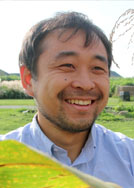 Kaiyu Guan, Assistant Professor in the Department of Natural Resources and Environmental Science, is a computational environmental scientist whose current research emphasizes the impacts of hydro-climate change on vegetation dynamics and crop productivity in tropical and temperate regions. The goal of this research is to increase our society's resilience and adaptability to sustain ecosystem services, food security, and water resources under the influence of climate change.
Kaiyu Guan, Assistant Professor in the Department of Natural Resources and Environmental Science, is a computational environmental scientist whose current research emphasizes the impacts of hydro-climate change on vegetation dynamics and crop productivity in tropical and temperate regions. The goal of this research is to increase our society's resilience and adaptability to sustain ecosystem services, food security, and water resources under the influence of climate change.
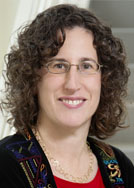 Sharon Hammes-Schiffer (2014 - 2017), Swanlund Professor of Chemistry, focuses on the development and application of theoretical and computational methods for describing chemical reactions in condensed phases and at interfaces. The objective of her research is to elucidate the fundamental physical principles underlying charge transfer reactions. She has made important contributions to theories of proton-coupled electron transfer reactions, which play vital roles in a broad range of biological and chemical processes, including photosynthesis, respiration, enzyme reactions, and solar cells.
Sharon Hammes-Schiffer (2014 - 2017), Swanlund Professor of Chemistry, focuses on the development and application of theoretical and computational methods for describing chemical reactions in condensed phases and at interfaces. The objective of her research is to elucidate the fundamental physical principles underlying charge transfer reactions. She has made important contributions to theories of proton-coupled electron transfer reactions, which play vital roles in a broad range of biological and chemical processes, including photosynthesis, respiration, enzyme reactions, and solar cells.
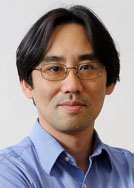 So Hirata, Alumni Research Scholar Professor of Chemistry, uses quantitative theories and computing technology to interpret and predict the properties and transformations of molecules, polymers, and solids. Using Blue Waters, he intends to predict a variety of properties of all molecular phases of ice and dry ice from first principles with expected impact on fields including high-pressure chemistry, geochemistry, and planetary science. He will also apply his newly developed, highly scalable stochastic algorithm of quantum chemistry to directly evaluate optoelectronic properties of molecules used in advanced organic materials, such as solar cells and light emitting diodes.
So Hirata, Alumni Research Scholar Professor of Chemistry, uses quantitative theories and computing technology to interpret and predict the properties and transformations of molecules, polymers, and solids. Using Blue Waters, he intends to predict a variety of properties of all molecular phases of ice and dry ice from first principles with expected impact on fields including high-pressure chemistry, geochemistry, and planetary science. He will also apply his newly developed, highly scalable stochastic algorithm of quantum chemistry to directly evaluate optoelectronic properties of molecules used in advanced organic materials, such as solar cells and light emitting diodes.
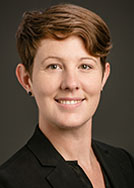 Katy Huff, Assistant Professor in the Department of Nuclear, Plasma, and Radiological Engineering is interested in modeling and simulation in the context of nuclear reactors and fuel cycles towards improved safety and sustainability of nuclear power. In the context of high performance computing, this work requires the coupling of multiple physics at multiple scales to model and simulate the design, safety, and performance of advanced nuclear reactors.
Katy Huff, Assistant Professor in the Department of Nuclear, Plasma, and Radiological Engineering is interested in modeling and simulation in the context of nuclear reactors and fuel cycles towards improved safety and sustainability of nuclear power. In the context of high performance computing, this work requires the coupling of multiple physics at multiple scales to model and simulate the design, safety, and performance of advanced nuclear reactors.
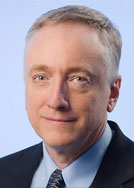 Athol Kemball, associate professor, Astronomy, uses Blue Waters to address problems in radio-interferometric image formation that are relevant to future large astronomical telescopes, such as the Square Kilometer Array. His team has developed a software framework implementing a novel solution to the problem of pixel-level uncertainty quantification and will deploy and optimize this framework for Blue Waters.
Athol Kemball, associate professor, Astronomy, uses Blue Waters to address problems in radio-interferometric image formation that are relevant to future large astronomical telescopes, such as the Square Kilometer Array. His team has developed a software framework implementing a novel solution to the problem of pixel-level uncertainty quantification and will deploy and optimize this framework for Blue Waters.
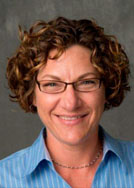 Sonia Lasher-Trapp, professor, Atmospheric Sciences. Lasher-Trapp plans to use Blue Waters to simulate entrainment, the process by which cumulus clouds bring dry air from outside the cloud inward. Entrainment initially favors precipitation formation, but eventually it dilutes the cloud and encourages its demise. A long-standing problem in meteorology has been to reproduce how quickly entrainment dilutes the cloud.
Sonia Lasher-Trapp, professor, Atmospheric Sciences. Lasher-Trapp plans to use Blue Waters to simulate entrainment, the process by which cumulus clouds bring dry air from outside the cloud inward. Entrainment initially favors precipitation formation, but eventually it dilutes the cloud and encourages its demise. A long-standing problem in meteorology has been to reproduce how quickly entrainment dilutes the cloud.
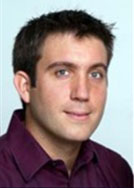 Vincent Le Chenadec (2014 - 2017), assistant professor, Aerospace Engineering. Le Chenadec develops and uses novel numerical methods that leverage computational geometry to solve a long-standing problem in simulating and modeling turbulent reacting high-density-ratio liquid-gas systems. These developments make it possible to investigate the fundamental fluid dynamics of liquid jets injected into gas environments, which could improve the design of devices for fuel-air mixing and thereby improve engine efficiency.
Vincent Le Chenadec (2014 - 2017), assistant professor, Aerospace Engineering. Le Chenadec develops and uses novel numerical methods that leverage computational geometry to solve a long-standing problem in simulating and modeling turbulent reacting high-density-ratio liquid-gas systems. These developments make it possible to investigate the fundamental fluid dynamics of liquid jets injected into gas environments, which could improve the design of devices for fuel-air mixing and thereby improve engine efficiency.
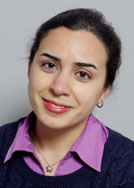 Taraneh Sayadi (2014), assistant professor, Aerospace Engineering. Sayadi's research focuses on the direct and large eddy simulation of complex turbulent flows with the objective of designing reduced-order models and control strategies. She plans to develop data-driven decomposition techniques tailored to the large-scale data-sets encountered in reactive flow simulations.
Taraneh Sayadi (2014), assistant professor, Aerospace Engineering. Sayadi's research focuses on the direct and large eddy simulation of complex turbulent flows with the objective of designing reduced-order models and control strategies. She plans to develop data-driven decomposition techniques tailored to the large-scale data-sets encountered in reactive flow simulations.
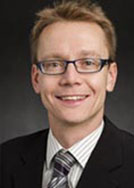 Andre Schleife, assistant professor, Materials Science and Engineering, uses accurate and predictive computational first-principles methods to study ground states, excited electronic states, and their dynamics in various materials, with the ultimate goal of gaining the knowledge necessary to design new and better materials. He joined the University in December 2013 after a post-doctoral position at Lawrence Livermore National Laboratory.
Andre Schleife, assistant professor, Materials Science and Engineering, uses accurate and predictive computational first-principles methods to study ground states, excited electronic states, and their dynamics in various materials, with the ultimate goal of gaining the knowledge necessary to design new and better materials. He joined the University in December 2013 after a post-doctoral position at Lawrence Livermore National Laboratory.
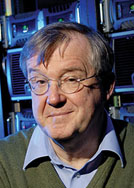 Klaus Schulten (2014 - 2016), Swanlund Professor of Physics, is world-renowned for developing and implementing powerful computational techniques for modeling and analyzing biomolecular structures that arise in living cells. He heads the NIH Center for Macromolecular Modeling & Bioinformatics and is co-director of the NSF Center for the Physics of Living Cells. He uses Blue Waters to simulate the physical and quantum physical properties of large-scale molecular assemblies, including recent work on the chemical structure of the HIV capsid, on the development of antiviral and antimicrobial drugs, as well as on the use of solar energy in photosynthetic organisms.
Klaus Schulten (2014 - 2016), Swanlund Professor of Physics, is world-renowned for developing and implementing powerful computational techniques for modeling and analyzing biomolecular structures that arise in living cells. He heads the NIH Center for Macromolecular Modeling & Bioinformatics and is co-director of the NSF Center for the Physics of Living Cells. He uses Blue Waters to simulate the physical and quantum physical properties of large-scale molecular assemblies, including recent work on the chemical structure of the HIV capsid, on the development of antiviral and antimicrobial drugs, as well as on the use of solar energy in photosynthetic organisms.
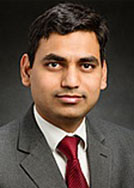 Diwakar Shukla, assistant professor, Department of Chemical & Biomolecular Engineering, focuses on developing and using novel atomistic simulation approaches for understanding complex biological processes. His work on Blue Waters focuses on plant kinases and phosphatases involved in response to these external stresses are investigated to elucidate the molecular basis of drought-resistance in plants.
Diwakar Shukla, assistant professor, Department of Chemical & Biomolecular Engineering, focuses on developing and using novel atomistic simulation approaches for understanding complex biological processes. His work on Blue Waters focuses on plant kinases and phosphatases involved in response to these external stresses are investigated to elucidate the molecular basis of drought-resistance in plants.
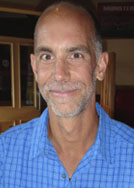 Robert Jeffrey Trapp, professor, Atmospheric Sciences. Trapp plans to use Blue Waters to simulate severe thunderstorms and tornadoes under the weather and climate conditions predicted for the future. This will help address the impact that human-generated climate change could have on hazardous weather.
Robert Jeffrey Trapp, professor, Atmospheric Sciences. Trapp plans to use Blue Waters to simulate severe thunderstorms and tornadoes under the weather and climate conditions predicted for the future. This will help address the impact that human-generated climate change could have on hazardous weather.

